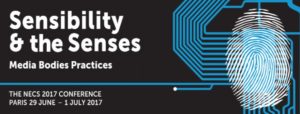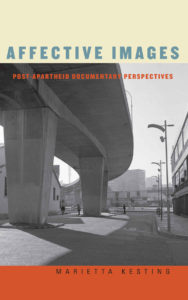Ausstellungsgespräch Pilger Mills
Eva Kernbauer
24. Oktober 2017
Kunstverein Nürnberg
Ausstellungsgespräch Pilger Mills
Eva Kernbauer
24. Oktober 2017
Kunstverein Nürnberg
Ein Gespräch zwischen Kristina Pia Hofer und Veronika Eberhart
20. Oktober 2017
Neue Galerie Graz
 p*art*icipate – eJournal des Programmbereichs Contemporary Arts & Cultural Production Schwerpunkt Wissenschaft & Kunst, Universität Salzburg in Kooperation mit der Universität Mozarteum
p*art*icipate – eJournal des Programmbereichs Contemporary Arts & Cultural Production Schwerpunkt Wissenschaft & Kunst, Universität Salzburg in Kooperation mit der Universität Mozarteum
#issue 08
http://www.p-art-icipate.net/cms/?p=5880&view-all=1
„Finally, an all-day workshop on Re-Mediating Cinematic Experience (organized by Kristina Pia Hofer, Eva Kernbauer and Marietta Kesting) took place on Friday within the research project A Matter of Historicity, focusing on the event character of cinema. Giuliana Bruno, Professor of Visual and Environmental Studies, Harvard University, gave a lecture on the often-neglected material dimension of cinema, its surfaces and screens of projection throughout history. Erica Balsom, Senior Lecturer in Film Studies and Liberal Arts, King’s College, London, discussed the implications of the “liveness” and irreproducibility of a cinematic event. Volker Pantenburg, Professor of Film Studies, Freie Universität Berlin, explored questions of analogue and digital film formats in museums and gallery spaces. The Autumn School closed with a performance by the Danish art collective Vinylterrorandhorror (Camilla Soerensen and Greta Christensen), playing, breaking and re-assembling bits and pieces of LP records – and thus allowing the audience to almost painfully experience the materiality of music and performance art.“
![]() https://opengenderjournal.de/article/view/12/16
https://opengenderjournal.de/article/view/12/16
Mit einem Beitrag von Kristina Pia Hofer: ‚Repräsentation als agentieller Schnitt? Provokationen und Potentiale im Verhältnis von New Materialism und (feministischer) Filmwissenschaft
Historicity in Motion: A Conversation between Kristina Pia Hofer and Veronika Eberhart about 9 is 1 and 10 is None

Again in her latest work, the artist Veronika Eberhart translates theoretical reflections on socio-political changes, feminist issues and economic constraints into a complex arrangement composed of performance, video, sound and installation.
https://vfmk.org/shop/veronika-eberhart
Details: Paperback, 22,1 x 16,7 cm, 118 pages, numerous ills. in color
ISBN: 978-3-903228-15-3
 “Re/Enacting Lost Histories: Michelle Monareng’s Removal to Radium and Lebohang Kganye’s Pied Piper’s Voyage, South Africa”
“Re/Enacting Lost Histories: Michelle Monareng’s Removal to Radium and Lebohang Kganye’s Pied Piper’s Voyage, South Africa”
Paper von Marietta Kesting im Panel: Historical approaches and transitional periods
Visible Evidence Conference 2017 in Buenos Aires
2.8.2017, 1.30 – 3.00 pm
Room / Sala Fernando Birri – CCBorges-UNTREF
 Sensibility and the Senses. Media, Bodies, Practices: European Network for Cinema and Media Studies Conference 2017
Sensibility and the Senses. Media, Bodies, Practices: European Network for Cinema and Media Studies Conference 2017
Université Sorbonne Nouvelle – Paris 3
29 June – 1 July 2017
with a contribution by Kristina Pia Hofer: ‚Vinyl Terror and Horror as Haptic Paracinema of Sound‘
Journal of Art Historiography
Number 16 June 2017
Mit einem Beitrag von Eva Kernbauer: ‘Anachronic concepts, art historical containers and historiographical practices in contemporary art’

Marietta Kesting
http://www.sunypress.edu/p-6472-affective-images.aspx
Price: $95.00
Hardcover – 292 pages
ISBN13: 978-1-4384-6785-6
Explores intervisual case studies in relation to migration, xenophobia, and gender.
Affective Images examines both canonical and lesser-known photographs and films that address the struggle against apartheid and the new struggles that came into being in post-apartheid times. Marietta Kesting argues for a way of embodied seeing and complements this with feminist and queer film studies, history of photography, media theory, and cultural studies. Featuring in-depth discussions of photographs, films, and other visual documents, Kesting then situates them in broader historical contexts, such as cultural history and the history of black subjectivity and revolves the images around the intersection of race and gender. In its interdisciplinary approach, this book explores the recurrence of affective images of the past in a different way, including flashbacks, trauma, “white noise,” and the return of the repressed. It draws its materials from photographers, filmmakers, and artists such as Ernest Cole, Simphiwe Nkwali, Terry Kurgan, Thenjiwe Niki Nkosi, Adze Ugah, and the Center for Historical Reenactments.
“In its focus on lens-based media, the book not only tackles some of the questions around the visuality of migration and xenophobia, but also does so using the media (photography and film) that are probably the most complicit in the visual witnessing and translation within this field.” — Rory Bester, coeditor of Rise and Fall of Apartheid: Photography and the Bureaucracy of Everyday Life.